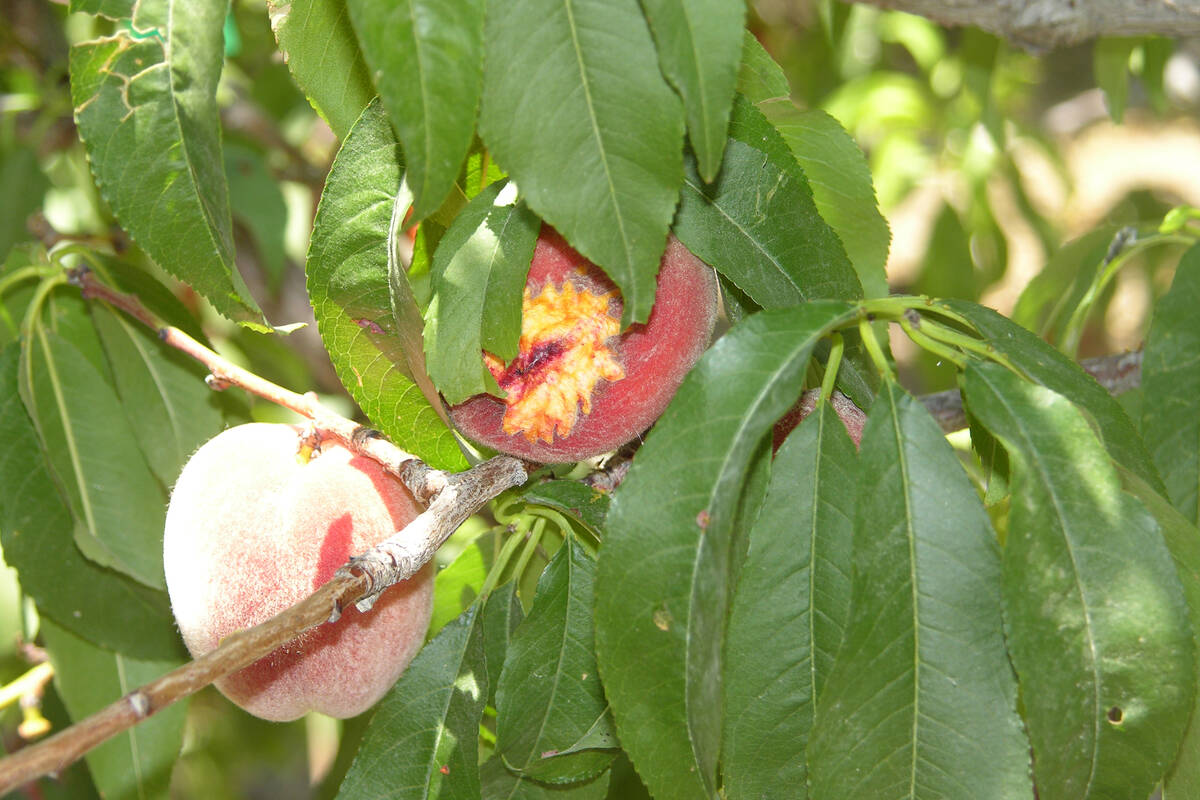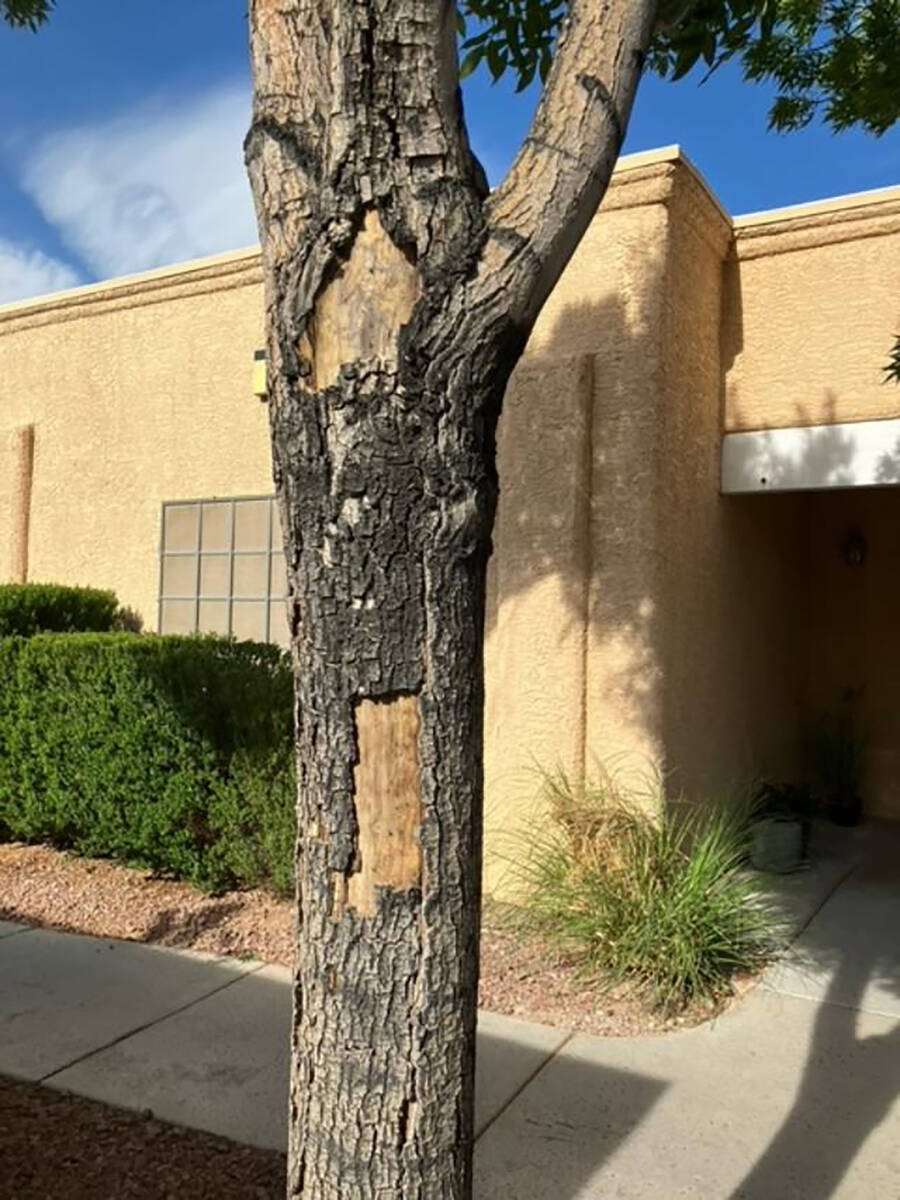Help! Birds are eating figs and peaches off my trees
Q: Can you recommend something to discourage birds from eating my figs and peaches?
A: Peaches are a lot easier than figs. Figs must be picked when they are ripe. Peaches will ripen off the tree. As soon as you see bird pecks on firm peaches, harvest them. Don’t wait for them to get soft. The birds know when they are ripe enough to eat.
A few days on the shelf at room temperature and they will be ripe enough to eat. If you are not sure whether to harvest the peaches, look at their background color, or when they turn from green to either yellow or red with yellow, depending on the variety.
If you are still not sure, mark your calendar; do this in combination with bird pecks. If they are ready to harvest in early June, mark your calendar and start checking them in late April for bird pecks. Start harvesting them the day you see bird pecks. Or harvest them when they turn color — when they are firm and no longer hard. A couple of days out of the sun and at room temperature and they will be ready to eat.
Harvest the ones that are ready first and then wait a few days and harvest more. Peaches will ripen first where they get the most heat. That means the south and west sides and top are first, then the more interior ones are ready in a few more days.
With figs, the best thing I can tell you is to harvest early in the morning, as early as possible.
We have had no luck with hanging tinsel, CDs, owls, etc. When the birds got used to them, they always had a field day with the fruit. Most of the oddball things that scared birds, and hung in trees within about two weeks of harvest, were effective. Longer than about two weeks, and the birds started to get used to any devices and devastated the fruit.
Q: One of our mature Meyer lemons just crashed. I think we are giving it enough water. I fertilized it and applied Kerex iron.
A: Right now, we should be applying water twice a week for most soils and fruit in the Las Vegas area. That is the first thing to take care of before we start correcting other problems.
During spring is a dangerous time to fiddle with the amount of water. If you skimp on water while the fruit is getting larger, then it may make fruit smaller because you were not applying enough water. Enough water must be available if you want the fruit larger.
But never daily. If water is applied too often, then diseases are a problem.
The first thing to do is make sure there is enough water present for fruit formation.
Next are the nutrients. For the fruit and trees to be healthy and to produce healthy fruit, all nutrients should be present.
That’s the purpose of wood chips plus fertilizer. They rot or decompose when water is present. That’s why we fertilize fruit trees at least once or twice a year with the macro-nutrients nitrogen, phosphorus and potassium.
Iron applications are different. Iron is a micronutrient and not available in many of our desert soils because of the soil pH. Iron is needed in much smaller amounts, but it is still very important. In fact, it is essential with manganese and zinc.
All three are affected a lot by a soil’s alkalinity or acidity. All three of these micronutrients are affected by (in our soil especially iron) their availability in a high pH desert soil. Any yellowing of leaves can be one of these three nutrients. But iron is most likely in our desert soil.
Many of our iron fertilizers (the older types) only work if the soil pH is 6.8 or lower. EDDHA chelated iron was made to work at any soil alkalinity. Any type of iron must be applied only from February through about May. The closer to February the better.
But clear up the water and mulch problems first.
Q: My tree looks fine on the top with all its leaves, but the trunk has places where the bark has fallen off. I wonder what the problem is?
A: This is sun damage. It normally occurs on the unprotected sides of the trunk facing west or south. You can remove the loose bark. Underneath, you may see the cambium layer rolling back over the damaged area. Leave it alone.
Oftentimes, trees that get sun damage may get borer damage in those areas as well. But I did not see any borer damage in the pictures that you sent.
Q: I used an app called Bloomify to make sure that I had identified my peach trees correctly. It corroborated that I had but also showed a bacterium present at around 30 percent. The two trees are laden with fruit; though the peaches are small, they appear to be turning to a ripened color. If the app is correct and the trees are infected with bacterium, is the fruit still edible? And how do I rid the trees of this bacterium?
A: Those apps can be handy. I use a weather app on occasion and found it to be very accurate. I don’t know the bacterium that you’re talking about. Bacterial diseases can be quite tricky. Most plant diseases are not transmittable to humans.
If the tree looks healthy, then I would leave it alone. Enjoy the fruit. Most diseases are related to the weather and in particular the humidity.
I was taught that plant disease development can be thought like a three-legged stool. All three (the right plant, the right disease organism, the right weather) must come together for plant diseases to happen. Thanks to our desert climate, there are a lot of barriers for most of them.
If you are really concerned about your tree and its health, I would contact a qualified plant pathologist (familiar with desert climates) to identify which bacterium is present and whether it will damage the tree.
Bob Morris is a horticulture expert and professor emeritus of UNLV. Visit his blog at xtremehorticulture.blogspot.com. Send questions to Extremehort@aol.com.


















